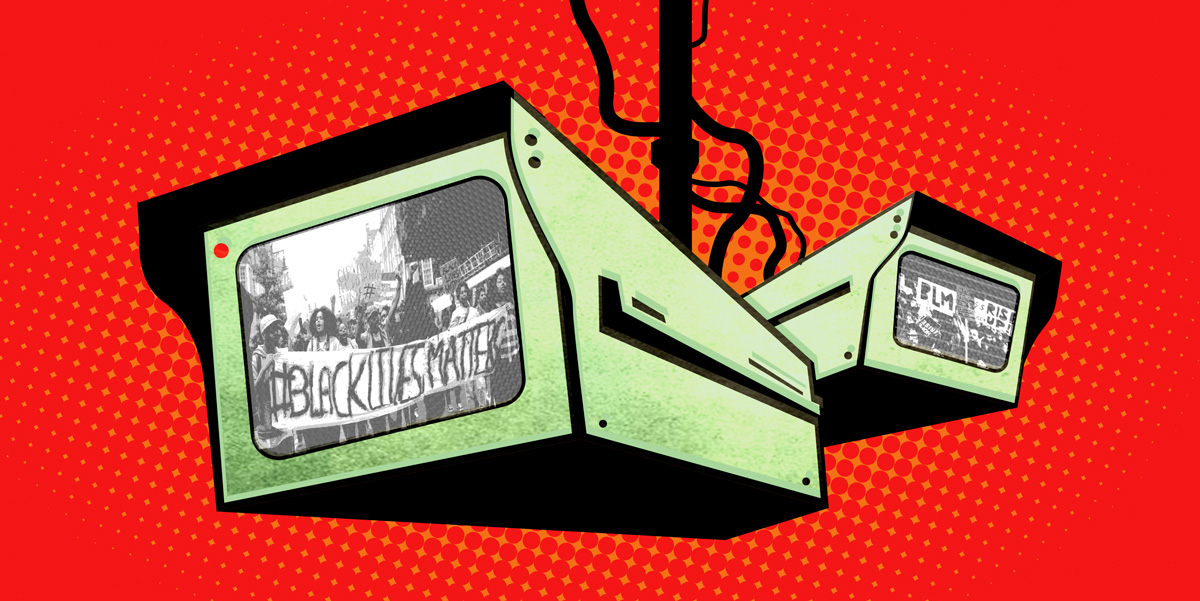In a 4-7 vote, San Francisco’s Board of Supervisors passed a 15-month pilot program granting the San Francisco Police Department (SFPD) more live surveillance powers. This was despite the objections of a diverse coalition of community groups and civil rights organizations, residents, the Bar Association of San Francisco, and even members of the city’s Police Commission, a civilian oversight body comprising of mayoral and Board appointees. The ordinance, backed by the Mayor and the SFPD, enables the SFPD to access live video streams from private non-city cameras for the purposes of investigating crimes, including misdemeanor and property crimes. Once the SFPD gets access, they can continue live streaming for 24 hours. The ordinance authorizes such access by consent of the camera owner or a court order.
Make no mistake, misdemeanors like vandalism or jaywalking happen on nearly every street of San Francisco on any given day—meaning that this ordinance essentially gives the SFPD the ability to put the entire city under live surveillance indefinitely.
This troubling ordinance also allows police to surveil “significant events,” loosely defined as large or high-profile events, “for placement of police personnel.” This essentially gives police a green light to monitor—in real-time—protests and other First Amendment-protected activities, so long as they require barricades or street closures associated with public gatherings. The SFPD has previously been caught using these very same cameras to surveil protests following George Floyd’s murder, and the SF Pride Parade, facts that went unaddressed by the majority of Supervisors who authorized the ordinance.
The Amendments
During the hearing, Supervisor Hillary Ronen introduced two key amendments to address and mitigate the ordinance’s civil liberties impacts. The first would have prohibited the SFPD from live monitoring public gatherings unless there was imminent threat of death or bodily harm. This failed, by the same 4-7 tally as the ordinance itself.
The second, which was successful, required stronger reporting requirements on SFPD’s use of live surveillance and the appointment of an independent auditor on the efficacy of the pilot program. This amendment was needed to ensure that an independent entity rather than the SFPD itself, assesses the pilot program’s data to determine exactly how, when, and why these new live monitoring powers were used.
What’s This All About?
What is this all about? During the hearing, several of the Supervisors talked about how San Franciscans are worried about crime, but failed to articulate how giving police live monitoring abilities addresses those fears.
And in fact, many of the examples that both the SFPD and the Supervisors who voted for this ordinance pointed to are the types of situations where live surveillance would not help. Some Supervisors pointed to retail theft or car break-ins as examples of why live surveillance is needed. But under the ordinance, an officer would need to first seek permission from an SFPD captain and then go to a camera owner to request access to live surveillance—steps that would take far longer than the seconds or minutes for these incidents to occur. And if police have reason to believe a crime is about to occur at a particular location, it makes far more sense to send an officer rather than go through the process of getting permission to live monitor a camera, which carries the risk of putting an intersection or a pharmacy under constant police surveillance for no reason.
Moreover, as Supervisor Shamann Walton pointed out, police have always been able to get historical footage of crimes simply by sending a request to the camera’s owner—this is especially true of the thousands of Business Improvement District/Commercial Benefit District cameras from which police have long been obtaining historic footage to build cases or gather evidence. So other than a desire to actively watch large swaths of the city, it’s unclear how live monitoring helps police get anything they couldn’t already get by sending a simple request after the fact.
Which leaves us to the sad conclusion that this ordinance isn’t really about the safety of San Franciscans—it’s about security theater. It’s about putting voters at ease that something, anything is being done about crime—even if that proactive move has no discernible effect on crime and, in fact, actively threatens to harm San Francisco’s activists and most vulnerable populations.
A Heartfelt Thank You
A very large coalition pushed against this ordinance. Without their efforts and the efforts of many other other San Franciscans who weighed in during public comment, the 15-month sunset date for the pilot or the independent audit provision would not have been possible.
Commendations should also be heaped upon Supervisors Chan, Preston, Ronen, and Walton for their brave stand at the Board of Supervisors meeting, their sharp critique and questioning of the legislation, and their willingness to listen to concerned community members.
Watching the Watchers
Because this bill has a sunset provision that requires it to be renewed 15 months from now, we have another chance to put on our boots, dust off our megaphones, and fight like hell to protect San Franciscans from police overreach. In the meantime, and along with our coalition, we’ll be monitoring for violations and tracking the data that the SFPD produces. And we’ll be there in 15 months to hopefully prevent the reauthorization of this dangerous ordinance.











